Two opposing coalitions in the Middle East define a rivalry that threatens to tear the region apart. As competition for dominance intensifies, the confrontation between Iran’s network of state and non-state actors, and a counter-front of traditional Western allies – centred on Saudi Arabia, the United Arab Emirates, and Israel – has become the region’s central battle line.

In the aftermath of an election, Iraq enters unchartered territory that could intensify the struggle for influence between competing domestic factions and external players. With the military campaign against the Islamic State group (ISIS) in the country winding down, the international forces that oppose the group have lost the shared sense of threat that led them to cooperate with one another. Iraq’s stability now depends on the formation of a new political coalition. Prime Minister Haider al-Abadi has so far made careful attempts to ensure the country maintains a balanced position between international actors. This delicate balance may well be undone by a successor. Such a development could fuel the rivalry between Tehran and Washington in Iraq, while also unravelling Riyadh’s recent policy of re-engagement with the country and prompting regional actors to jockey for power more aggressively.
Iran continues to enjoy unparalleled influence in Iraq through its economic, political, and social initiatives, which primarily target Shia and Kurdish communities. Tehran’s main objective is to maintain a pro-Iran, Shia-dominated government in Baghdad, to ensure that Iraq can never again threaten Iranian security as it did under Saddam Hussein. Since the 2003 US-led invasion of Iraq, Iran has stepped into the security and political vacuum in the country, allying with militias that could both ensure Shia ascendancy and contain the perceived long-term risks posed by the US military presence on Iran’s borders.
Many of these militias played an essential role in driving ISIS out of the territory it held in Iraq. The central government is now attempting to bring these groups, known collectively as Hashd al-Shaabi, under its control. Yet some powerful militias, such as those led by Hadi al-Amiri and Abu Mehdi al-Mohandis, answer to Tehran and are likely to maintain their independence from Baghdad and continue to monopolise security provision in pockets of the country.
Against this backdrop, the greatest threat to Iraq’s stability is the risk of renewed confrontation between Tehran and Washington within its borders. Abadi has stated clearly that his government wants to shield Iraq from such confrontation and to maintain good relations with both sides. So far, Iran and the US have shown restraint. But the disintegration of ISIS, along with US President Donald Trump’s open hostility towards Iran, has begun to erode the de facto lines of deconfliction between US and Iranian-backed forces that emerged during the anti-ISIS fight in Iraq. It remains to be seen if the new ruling coalition in Iraq will endorse Abadi as prime minister.
There is growing concern that Tehran will mobilise its local allies against US troops and interests in Iraq if the confrontation between Washington and Tehran intensifies – although this appears improbable for now. The hawkish officials who recently joined the Trump administration, John Bolton and Mike Pompeo, are also more likely than their predecessors to push back against Iran in Iraq, in ways that relatively moderate US officials – especially those in Pentagon – have been eager to avoid. For example, during the conflict between Kurdish forces and the Iraqi government over control of Kirkuk in October 2017, there was growing pressure from Iran hawks in Washington for the US to militarily support the Kurdish Peshmerga, with the aim of confronting and pushing back Iranian forces fighting alongside the Iraqi army. The proposal was designed to prevent Iran’s local allies and the Islamic Revolutionary Guard Corps from gaining influence in an oil-rich, strategically important area of Iraq. However, the proposal ignored the degree of cooperation between Baghdad and Tehran on retaking Kirkuk, which was an important victory for Abadi in reasserting his authority in Iraq in the aftermath of the September 2017 Kurdish independence referendum.
The regional threat posed by the rivalry between Tehran and Riyadh is of less immediate concern in Iraq. Abandoning a long period of disengagement from the country, Riyadh has now adopted a more conciliatory policy that includes unprecedented outreach to Iraqi Shia political leaders. Saudi Arabia remains intent on weakening Iranian influence in Iraq, but appears to have acknowledged that a long-term effort to strengthen ties with Shia political figures and play up Iraq’s Arab identity may be more effective in creating distance between Baghdad and Tehran than a policy of disengagement or confrontation.
So far, Tehran has not openly sought to block these Saudi efforts; Iran’s Supreme Leader has even offered to support greater rapprochement between Iraq and its neighbours. But the Saudis’ new approach may irritate Tehran and could eventually provoke retaliatory action if it comes to be seen as a real threat to Iranian influence, particularly if the new coalition adopts a more confrontational approach to Tehran. Moreover, it is unclear how long Saudi outreach to Iraq will last. Recognising the extent to which Iran has acquired power over Iraq’s politics and economy, Riyadh may avoid serious investment in Iraq and adopt a more confrontational position once again.
As international forces push ISIS to the sidelines, Iraq may have an opportunity to end the turmoil of recent years. Yet any collapse of international alignment behind, and support for, the country as it gets back on track would be devastating for internal stability, likely giving ISIS and other insurgent groups – which are down, but not completely out – space to regroup.
